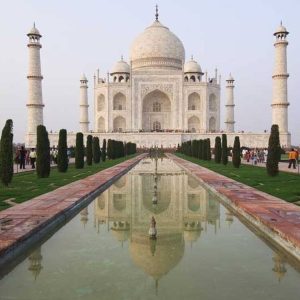2 Designing an India Pavilion at Disney’s EPCOT
Can Cultural Sensitivity and Commercial Success Coexist?
- What is EPCOT?
- Concept & History
EPCOT (Experimental Prototype City of Tomorrow) is one of four theme parks at Walt Disney World in Orlando, Florida.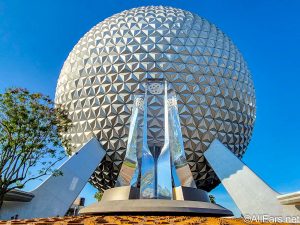
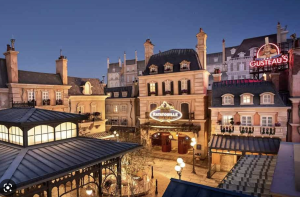
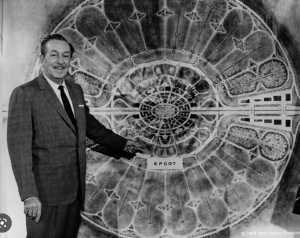
EPCOT is unique in that it is the most realistic of all of the Disney parks, and was the special brainchild of Walt Disney himself. Walt had always been interested in urban planning and was inspired by his many travels across different cultures. He designed EPCOT as a hub and spoke model residential complex, with a neighborhood in the outer rim populated by clusters of cultural communities, and a more cosmopolitan town center/commercial area would unite them in the middle. Walt imagined trains running through the park connecting the communities together and making it easy to access each other. However, Walt died five years before construction ever began at EPCOT. Without Walt to lead them, Imagineers re-designed EPCOT using fragments of Walt’s original idea, but shifted the goal of EPCOT from a residential complex to a full fledged theme park. Imagineers wanted EPCOT to be a symbol of the powers of mankind: a showcase of technology, scientific discovery and international culture. These ideas are what influenced the actual construction of the park.
Today, EPCOT is split into two parts: Future World (which focuses on the technological achievements of mankind and the idea of space exploration) and The World Showcase (a permanent World’s Fair). This project will focus on EPCOT’s World Showcase.
- Concept & History
- Why Does This Project Matter?
According to a Disney Parks Report in 2019, “EPCOT hosted 12.44 million guests, ranking it the fourth most visited theme park in North America and the second most visited in the world.” For many loyal guests of Walt Disney World, EPCOT may be the only exposure to international cultures they ever get, and the park forms the basis for their understanding of the represented cultures. Overheard at the park quotes from guests include: “This is basically like being in Mexico!” or “This Chinese food is so authentic!”. These expressions of excitement from guests are a manufactured product of Imagineers. Disney promotes EPCOT as an “authentic” experience, meant to “provide guests with the feeling of actually going to (some of these) destinations without ever leaving the comfort of Disney World.” However, what EPCOT fails to acknowledge in its marketing is the principle of “staged authenticity” that the park is built on. Staged authenticity refers to a stylized recreation of something real to make guests think they are actually in the real place (Milman, 2013). It is not the same thing as real authenticity, which is an actual rendition of what a place looks, sounds, and feels like at the present moment of time (Milman, 2013).
There is a danger in promoting a theme park that is intentionally designed with commercial and entertainment purposes as an authentic experience of an entire culture. This project digs into the differences between aesthetics (as it is used in “staged authenticity”) and real authenticity. In this project, I probe the question: is it possible to design an EPCOT pavilion in a way that is both culturally sensitive and commercially successful? Can these two goals work together in harmony? Should they?
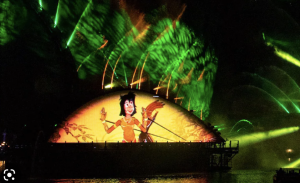
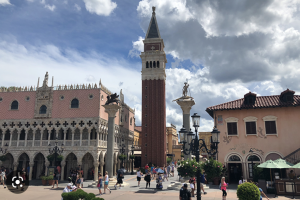
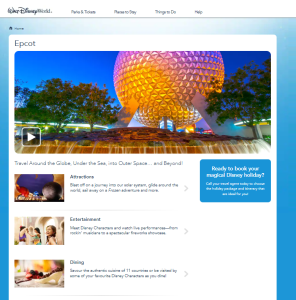
- Digging into The World Showcase
|
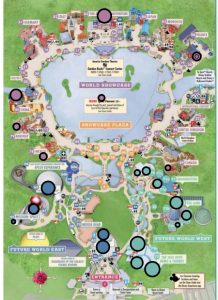 |
- Issues with The World Showcase
- Financing and Representation
So who actually sponsors these pavilions?During the initial stages of EPCOT’s construction, Disney executives reached out to the governments of over thirty countries for pavilion sponsorship. The company felt that the request for sponsorship was an opportunity for national governments to introduce the culture of their country and promote tourism within the American audience. Baked into the request for full sponsorship, Disney also offered creative rights to work with Imagineers regarding the design of the pavilions (Sehlinger, 2014). However, every single one of the thirty governments that Disney reached out to (except Morocco) denied the request for sponsorship due to political, cultural, or economic reasons. With lack of financial support from national governments, Disney turned to corporate organizations to fundraise the $800 million it took to build EPCOT (Sehlinger, 2014). Today, every single national pavilion at EPCOT (except Morocco) is sponsored by a corporate organization.Corporate financing provided Disney Imagineers with abundant resources to build out all the little details of EPCOT that make the theme park a true Disney experience for guests. But the fact that the funding for EPCOT comes from corporations leads to two major ethical problems. The fact that fundraising comes from corporate sponsorship presents two ethical issues (Sehlinger, 2014):- One, it limits the countries featured to a very specific list of companies who are willing to sponsor a pavilion. Most of these companies are business partners of Disney, resulting in skewed representation and a significant lack of diversity in the national pavilions (7 of the 11 pavilions at EPCOT are Western/European countries).
- Two, with sponsorship coming from corporate organizations, the responsibility for design of the pavilions was left to Imagineers. There was no higher authority to approve the design of national pavilions. This means that what you see when you walk into EPCOT is Disney’s interpretation of these international cultures – not the culture itself. This disclaimer is never made to guests upon entering the park.
- Financing and Representation
-
- Aesthetics vs. Authenticity
- In Tourism Scholarship:
- An Aesthetic Experience: one that is curated to stimulate our sensory and symbolic dimensions in a pleasing way. Anything that is consumed in “the context of a themed experience: architecture, exterior landscapes, interior environments, cultural artifacts, products, photographs, advertisements, clothing, costumes, music, paintings, cultural performances and actors,” are considered aesthetic details (Houston, 2011).
- An Authentic Experience: can also be curated, but it does not have to be pleasing. It is not stylized or caricatured – rather, it is an accurate depiction of the physical and cultural elements of a region. It includes real sensory details, the traditions associated with cultural artifacts, and exposure to the daily lived experience of locals.
- In the context of Disney’s EPCOT:
- Disney’s EPCOT aims for “staged authenticity:” the recreation of a real thing that is meant to make guests feel like they may be in the real place itself. According to a report on Aesthetics vs. Authenticity at Disney’s EPCOT, “the World Showcase at Disney’s EPCOT uses aesthetics to create a particular experience of the world of a bygone era for those who visit (Houston, 2011).”
- Imagineers designed the pavilions by mapping the topography of identities, memories, places, practices, and discourses that they argue tourists normally undertake as they travel. But this approach does not provide an authentic experience – only an aesthetic one. One could argue that EPCOT is designed not as an international showcase, but the world as it is seen through the eyes of American tourists.
- In Tourism Scholarship:
- Aesthetics vs. Authenticity
|
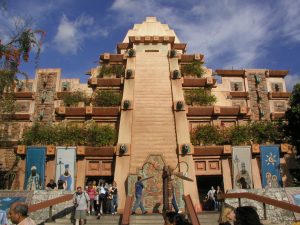 |
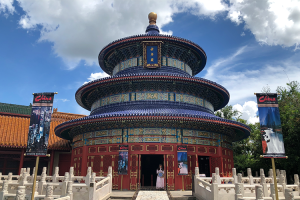 |
|
|
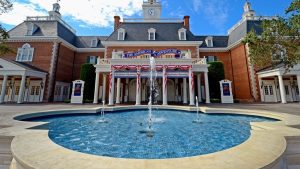 |
- Of course, one can argue that no one spends money on an EPCOT park ticket to read about depressing racial injustices. But in the context of a themed “educational and authentic” experience such as EPCOT, an illusion of authenticity is built off of aesthetic, hyper-real details and a sanitized re-telling of history that isn’t always accurate. This caricature of real cultures is meant to trigger guests into a mindset of consumption rather than immersion.
- According to Houston, many critics of “Disney-fication” of society point to the danger posed by the staged authenticity of EPCOT that leads guests to believe that what they are seeing at each pavilion is a true cultural experience.
- But it is not. It is Disney’s interpretation of history and these cultures for the purpose of entertainment and commercialism rather than education and cultural immersion.
- Reimagining the World Showcase: Building an India Pavilion
- What are we really trying to showcase?
- If this pavilion were designed the typical Disney way, there would no doubt be an emphasis on the “touristy,” more commercially popular landmarks of India, like the Taj Mahal. The goal of this project is not to create a pavilion that is out of place at EPCOT, but one that retains the same spirit of cultural exposure and immersion while also being self aware of its shortcomings.
- The Challenge: How might we design a Disney EPCOT India Pavilion to retain elements of entertainment and Disney IP while still educating guests on what an authentic experience of Indian culture might look like?
- Layout (Architecture and Setting)
- What are we really trying to showcase?
|
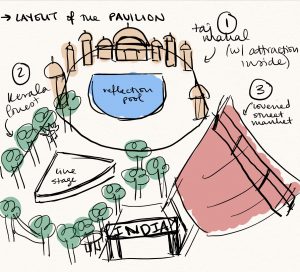 |
| 1) Taj Mahal Façade
|
2) Jungle Book inspired Kerala Forest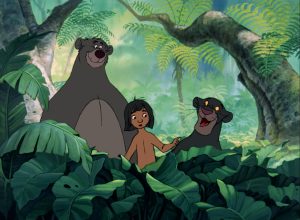 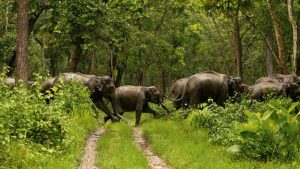 |
3) Covered Street Market with Food and Textile Vendors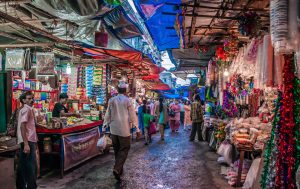 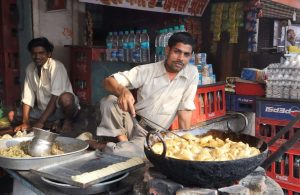 |
-
- Music (and other sensory stimulus)
-
- One of the main sensory cues Disney uses to let guests know they have entered a new part of the park is music. At EPCOT, each pavilion is demarcated not only by a change in architecture, but also a change in music and smells. For example, the sound of bamboo flutes and gongs echo through the Chinese pavilion. And no one can deny the unmistakable smell of funnel cake and turkey legs in the USA pavilion.
- India is known for its rich culture of music. Again, showcasing all the different types of music from India would be impossible, but a soothing flute and sitar melody would be a key element of the pavilion.
- As far as smells, the delicious chat cooking in the street market should provide the same savory aroma a toursit would experience walking down the crowded streets of Delhi. However, the fragrance of jasmine flowers and marigolds will provide guests with the calmness and sense of beauty that comes with a visit to South India.
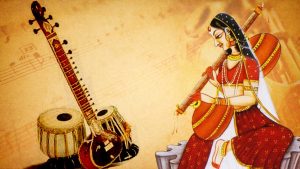
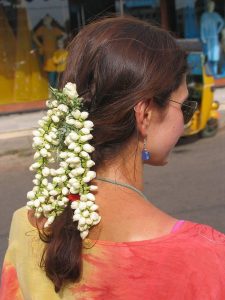
- Cuisine
- Food is one of the most important elements of Indian culture. The most exciting part about Indian food is that most of it is vegetarian, and there are many delicious vegan options. Having an authentic menu at the India EPCOT pavilion would be a key draw for guests.
- Chaat is one of the most common types of street food found in India. The word Chaat comes from the word “chatna,” which means “to lick” as the food items are typically salty, sweet, and tangy, and are known to ignite different sensations of the tongue. Different types of chaat items originated in different parts of India, so it is a good representation of the multi-culutral elements that make up Indian cuisine.
-


- Menu items:
- Aloo Chaat (spicy parboiled potato with chutney, from Northwest India)
- Bhelpuri (a soggy sweet treat of puffed ruce, chopped onions, and chutney, from Mumbai)
- Dahi Puri (crispy shells stuffed with potato and chickpea mixture and drizzled with yogurt and chutney, served all across India)
- Pakora (deep fried onion or paneer fritters with chutney to dip, served all across India)
- Mango Lassi (sweet mango flavored yogurt drink, served all across India)
- Live Performances
- Live performances are a dynamic and interactive way for guests to engage with the culture first hand. One of the goals of this pavilion is to create an array of live performance shows that do not caricature the culture of the country, but rather highlight the diversity and beauty of Indian art. This pavilion will have a rotation of three live performances throughout the day:
- Menu items:
|
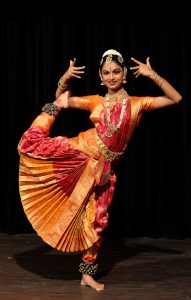 |
|
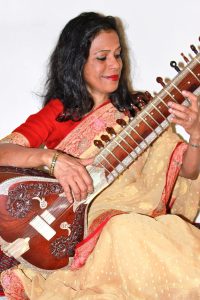 |
|
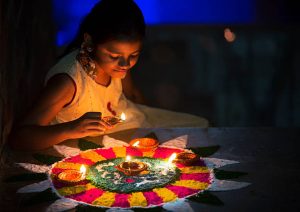 |
References:
- Houston, H. R., and Meamber, Laurie A. “Consuming the ‘world’: reflexivity, aesthetics, and authenticity at Disney World’s EPCOT Center.” Consumption Markets & Culture, vol. 14, no. 2. 2011, pp. 177-91.
- Imagineers. The Imagineering Field Guide to Epcot at Walt Disney World. New York: Disney Editions, 2006. Print.
- Milman, Ady. “Guest’s perception of staged authenticity in a theme park: an example from Disney’s Epcot’s World Showcase.” Tourism Review, vol. 68, no. 4, 2013, pp. 71-89.
- Sehlinger, Bob, and Testa, Len. The Unofficial Guide to Walt Disney World 2014. Birmingham: Keen Communications, 2014. Print.
- Sheppard, Randal. “Mexico Goes to Disney World: Recognizing and Representing Mexico at EPCOT Center’s Mexico Pavilion.” Latin American Research Review, vol. 51, no. 3, 2016, pp. 64-84. Print.

